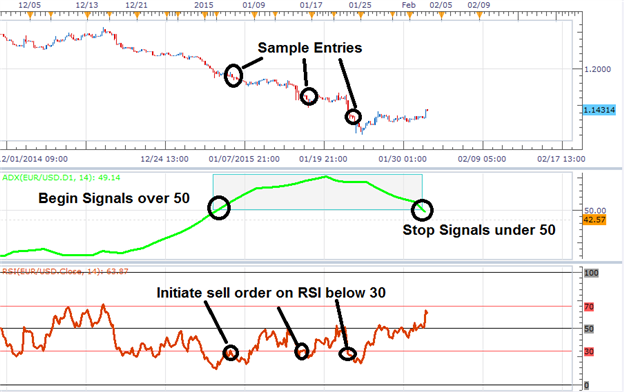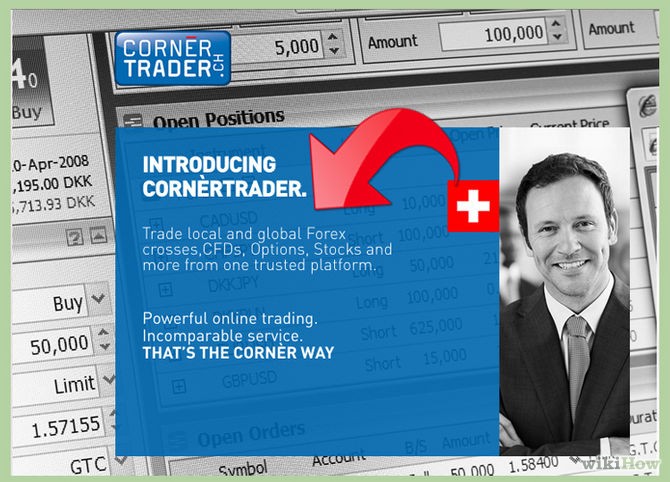The Best Currency Pairs To Trade & Times To Trade Them (Part 1) » Learn To Trade
Post on: 21 Июль, 2015 No Comment

The Best Currency Pairs to Trade & Times to Trade Them? (Part 1)
Two common questions that I get from aspiring forex traders are: “which currency pairs are best to trade?” and “what are the best times to trade?”
This two-part article will first address the question “which currency pairs are best to trade?”, and next week we will address the question “what are the best times to trade?” You should use this two-part article series as a reference guide to answer any question you may have about which currency pairs to trade and what times to trade them. Enjoy.
Types of Currency Pairs:
There are three categories of currency pairs; majors, crosses, and exotics. The following points will explain which currency pair’s fall into these three categories and the advantages or disadvantages of each.
The “major” forex currency pairs are the major countries that are paired with the U.S. dollar (the nicknames of the majors are in parenthesis). We are also including silver and gold in this list since they are quoted in U.S. dollars and we trade them regularly.
EUR/USD – Euro vs. the U.S. dollar (Fiber)
GBP/USD – British pound vs. the U.S. dollar (Sterling, Cable)
AUD/USD – Australia dollar vs. the U.S. dollar (Aussie)
NZD/USD – New Zealand dollar vs. the U.S. dollar (kiwi)
USD/JPY – U.S. dollar vs. the Japanese yen (the Yen)
USD/CHF – U.S. dollar vs. the Swiss franc (Swissie)
USD/CAD – U.S. dollar vs. the Canadian dollar (Loonie)
XAU/USD – Gold
XAG/USD – Silver
Now, there are some things we need to discuss about the “majors” before we move on to discuss the “crosses”.
First off, many of the major currency pairs are correlated in their price movement, meaning they move almost identical to one another. For example, the EURUSD and the GBPUSD tend to move in the same general direction (not exactly the same), the GPBUSD is typically a bit more volatile than the EURUSD, but if the EURUSD is in an obvious up or down trend you can safely assume the GBPUSD is in the same trend, thus we say they are positively correlated.
The USDCHF is negatively correlated to the EURUSD, so if the EURUSD is moving higher the USDCHF is most likely moving lower. You will find if you take a EURUSD chart and a USDCHF chart of the same time frame and hold one right side up and one upside down, they will look fairly similar, this is because they are negatively correlated.
So what does this correlation business mean to you? It means you need to be careful when making your trading decisions so as to not double up your risk or trade against a position you currently have open. For example, if you enter a long on the EURUSD and the GBPUSD, you are basically doubling your risk, and there is really no point in trading both at the same time, you might as well trade one or the other, if there is a similar price action setup on both, pick the pair that the setup looks more defined on.
Similarly, if you enter a long position on the EURUSD and a short on the USDCHF, you are essentially doubling your risk. I have found the USDCHF to be very choppy compared to the EURUSD and GBPUSD, and I rarely trade the USDCHF as a result, I aim my focus on the EURUSD and GBPUSD if I want to trade a European currency against the U.S. dollar. This is not to say you should never trade the USDCHF, but just be advised that in my experience the EURUSD and GBPUSD provide better price action trading opportunities.
The EURUSD is also the most widely traded pair, and therefore it carries the highest volume of all currency pairs, this also means it is the most liquid, which is another reason I prefer it over its correlated counter-parts. The EURUSD makes up about 27% of forex trading volume, next is the USDJPY at 13%, followed by the GBPUSD at 12% of the total forex trading volume
• Commodity currencies
A commodity currency is a name given to currencies of countries which depend heavily on the export of certain raw materials for income. The major currencies that are also considered “commodity currencies” are the Australian dollar, Canadian dollar, and New Zealand dollar.
Gold and silver are actual commodities, so they can also be considered “commodity currencies”, and once again they are traded in U.S. dollars, as we noted above.
My experience trading the commodity currencies is that the AUDUSD, NZDUSD, gold and silver, are the best to trade, I tend to avoid the USDCAD as I find it fires off many “false” trading signals, this may have something to do with it being heavily influenced by the price of crude oil. Whatever the reason, I typically avoid trading the USCAD and advise my students do the same, perhaps at a point in the future the USDCAD will “behave” more logically, but at the current time I tend to avoid it like the plague.
The “crosses” are those pairs that are not paired vs. the U.S. dollar such as:
AUD/CAD Australian dollar vs. the Canadian dollar
AUD/CHF Australian dollar vs. the Swiss franc
AUD/JPY Australian dollar vs. the Japanese yen
AUD/NZD Aussie dollar vs. the New Zealand dollar
CAD/JPY Canadian dollar vs. the Japanese yen
CHF/JPY Swiss franc vs. the Japanese yen
EUR/AUD – Euro vs. the Australian dollar
EUR/CAD Euro vs. the Canadian dollar
EUR/CHF Euro vs. the Swiss franc
EUR/GBP Euro vs. the British pound
EUR/JPY Euro vs. the Japanese yen
EUR/NZD Euro vs. the New Zealand dollar
GBP/AUD British pound vs. the Australian dollar
GBP/CHF British pound vs. the Swiss franc
GBP/JPY British pound vs. the Japanese yen
NZD/JPY New Zealand dollar vs. the Japanese yen
Now, I am not advising traders trade all of these crosses, there is certainly a short-list of the crosses that I trade and that I recommend all my students trade. That short-list looks like this: AUD/JPY, EUR/JPY, GBP/JPY, and NZD/JPY.
These four cross pairs are the most widely followed and make a nice addition to the major pairs mentioned above. Keep reading and I will condense all of this down at the end and show you how to make a concise “watch list” of currency pairs that you can follow on your forex trading journey .
The “exotics” are those pairs that consist of developing and emerging economies rather than developed and already industrialized economies like the majors. Here is a list of some of the more commonly traded exotics:
USD/TRY – U.S. dollar vs. the Turkish lira
EUR/TRY – Euro vs. the Turkish lira

USD/ZAR – U.S. dollar vs. the South African rand
USD/MXN – U.S. dollar vs. the Mexican peso
USD/BRL – U.S. dollar vs. the Brazilian real
The exotic currency pairs are not the best place to start as an aspiring forex trader. I still do not trade them and there are reasons why. The exotics are much less liquid than the majors and even the crosses. This means there is more risk built into the exotics, this makes them more prone to “slippage” and it also means they have wider spreads than the majors and the crosses.
(Note for total newbie’s; the “spread” is the price you pay your broker for “making the market” for you, it is the difference between the bid and the ask price, you automatically pay this every time you enter a trade, it can be very low on the majors, sometimes only 1 pip, the exotics can have very high spreads that are usually well over 10 pips. Essentially, the spread means you are negative on a trade from the beginning, so you must overcome the spread to get into profit, no sense in purposely putting yourself in the hole 15 or 20 pips by trading the exotics when you can trade the majors and only be 1 or 3 pips negative. Put the odds in your favor)
The exotics can also be much more volatile and thus less reliable than the majors and crosses, due to the thin liquidity in the exotic pairs they can move quite quickly and “jump around” or “slip” much more often than the majors or crosses. There simply is no real reason to worry about or trade the exotics, the majors and crosses provide you with more than enough price action trading opportunities to have a successful trading career. Traders who attempt to trade the exotics often get caught up in analysis-paralysis and are likely guilty of over-trading, they are certainly more susceptible to over-trading. Bottom line; ignore the exotics.
Create your own forex currency pair watch-list:
Now let’s condense this entire article down into some useful information that you can apply immediately to your forex trading routine.
Metatrader 4 has many little nuances that a lot of traders are unaware of. One of them is how to create a “market watch list” of the currency pairs you want to follow. You can also create a “pop up” price list that allows you to get a quick view of the current price quotes of all the pairs you follow, you can adjust the size of this pop up list and it will stay that way so every time you hit F10 you can see all the currencies you follow in large text. Here are the instructions to create a market watch list and a pop up price list in MT4:
Screen shot of my market watch list:
1) Click on “view” at the very top of your screen.
2) Click on “market watch” within the “view” menu
3) You should see a screen appear with some or all of the currency pairs available, and probably gold and silver.
4) Now, right click anywhere in the “market watch” window, you should see a menu appear with various options.
5) This is where you can pick and choose which currency pairs you follow. You will need to first select a currency pair if you want to hide it, then right click and select “hide”, it will now disappear from your market view menu. (note; if you have an open trade you cannot hide the quote of the currency pair from the trade you are in)
6) To reverse this just lick “show all” and all the currency pairs will pop back up.
7) You can also just click on “symbols” and then go through and hide or show which ever currency pairs you want.
8) Once you get your watch list set go to “sets” and save it. You can save multiple watch lists if you want.
9) Hit F10 and a pop-up price menu of your currently opened watch list will appear. This is a handy little short cut that you can use to check the prices of all the instruments on your watch list very quickly so that you don’t have to have the watch list window open all the time.
Now, the pairs that I recommend you include in your watch list are the following: EUR/USD, GBP/USD, AUD/USD, NZD/USD, USD/JPY, EUR/JPY, GBP/JPY, AUD/JPY, XAGUSD, and XAUUSD.
This gives you 10 different currency pairs to follow, more than enough to trade with. You really should pick your favorite 4 or 5 of these and follow them very closely and master one forex trading strategy at a time. once you progress you can add all 10 currency pairs to your watch list.
Remember to stay patient and avoid over-analyzing, over-trading, and over-leveraging. Stick to these core currency pairs and master my price action trading strategies and you will be well on your way to becoming a successful Forex trader. Stay tuned for next week’s follow-up to this article where we will discuss the best times to trade the Forex market.














